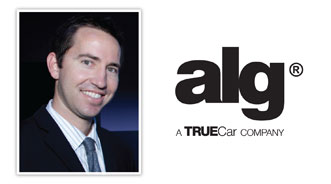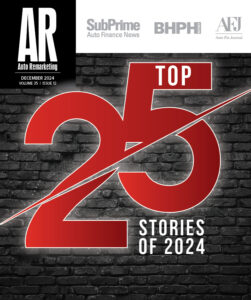ALG: Saab Values May Have Already Hit Bottom

The reasons for the various brand discontinuations at Big 3 automakers in recent years differ from nameplate to nameplate, and the used value results from these wind-downs have been a mixed bag as well.
In light of this, ALG set out to project the fallout for recently discontinued Saab, which the firm contends may have already “bottomed out” in terms of value.
“The analysis reveals that the Saab nameplate has been stripped bare of much of its value, and that there may not be much more room for decline,” ALG explained in its white paper examining brand discontinuation. “In fact, Saab’s value seems to have bottomed out over the past few years.”
Case in point, Saab’s 36-month auction values were already below those of Chevrolet back in 2005, several years prior to General Motors revealing a strategic review of the Swedish brand.
What’s more, ALG’s Used Statistical Brand Value Model had Saab significantly besting the industry average back in 2001 and ranking comparably to Acura. However, during the next decade, Saab’s decline in this measure was “by far the largest” among automakers.
Similar Situation as Other Discontinued Brands?
In comparing Saab’s situation to fellow Big 3 brands discontinued in the last few years — like Oldsmobile, Hummer, Mercury and others — ALG has found the Swedish brand’s wind-down story is mixed, but fairly comparable to brands like Oldsmobile or Mercury.
“Although the Saab story starts out with a unique brand à la Hummer, it ends much more like brands with replaceable alternatives like Mercury, only with less overall brand value,” analysts continued.
ALG vice president Eric Lyman also compared Saab’s demise to that of Oldsmobile, noting: "Despite its early cult-like following similar to Hummer, Saab’s wind-down is much more like Oldsmobile. Consumers have plenty of alternatives to satisfy their needs.”
Variances Between Brands
To arrive at this conclusion, ALG first looked at some of the reasons U.S. brands have stopped operations throughout history.
Becoming irrelevant led to the demise of some brands, analysts said, and others were cut because they “became redundant” within their own automaker.
ALG contends that while the lack of relevancy is applicable for Hummer, most Big 3 brand discontinuation decisions in recent years have been spurred by “a trend of badge engineering that led to overlap and eroding market share.”
As for Saab, ALG said it’s possible “a bit of each factor” led to its end.
Once a brand has closed up shop, analysts have discovered that results tend to vary, depending on what elements helped cause the discontinuation and “the circumstances of the process itself.”
At Oldsmobile, for example, it took several years after the initial discontinuation announcement for the negative results to take form. Putting the movement of 36-month auction values of Oldsmobile against comparable Chevrolet vehicles, it was late 2006 before Olds models lost their $500-plus premium, ALG noted.
“Part of what helped keep the brand aloft was the used of ‘Backed by General Motors’ tagline, which reminded buyers that their warranty and service experience would remain seamless, even after the brand’s exit,” ALG said of Oldsmobile.
“The implications for Saab are most applicable for the vehicles built during the GM era, which lasted until the end of 2009,” it continued. “Because vehicles built before 2010 will still have warranty coverage from GM, their value should be comparatively higher than Saabs built in 2010 or 2011.”
Granted, warranty coverage isn’t as much of a pressing concern for used Saab buyers. Instead, they are likely more concerned with finding parts or getting their vehicles fixed
Offering a different scenario, ALG moved on to Hummer.
In what was a similar situation to Saab’s, buy-out discussions fell through for the large SUV brand. Interestingly enough, though, auction values for Hummers were also on the decline next to comparable Chevrolet models prior to GM publicly revealing it was looking for buyers.
“In fact, this trend is fairly common, since the reason behind many closures is that the brand no longer represents a compelling value proposition to customers,” analysts stated.
In June 2008, GM announced it was reviewing Hummer and the drop-off grew steeper through April 2010, when GM stopped looking for a potential buyer.
“However, since that time, the value of Hummer vehicles has actually improved in relation to comparable Chevys, which tells a different tale from that of Oldsmobile,” ALG pointed out.
The reason for this, analysts, explained, was that Hummer vehicles weren’t easily substituted – hence, the “Like Nothing Else” tagline. Conversely, Chevy and Pontiac models were found to be suitable replacements for Olds vehicles.
Meanwhile, when looking at Mercury’s wind-down, ALG found that it presents an interesting “chicken or egg” dynamic regarding brand status versus resale value.
As the recovery from the 2008 turmoil did not help Mercury nearly as much as it helped the Ford brand, Mercury lost its premium to Ford and its values actually fell beneath the flagship division in 2009. In essence, the bulk of the damage was already done when the discontinuation was announced in June 2010.
But Mercury did not enjoy the same bounce-back that Hummer did.
“In contrast to the Hummer brand, Mercurys offered little to differentiate them from its corporate siblings, which gave used buyers no reason to seek them out once the brand was gone,” ALG explained.
The firm went on to note that Pontiac and Saturn saw comparable fates to Mercury, but not as “pronounced.”
Interestingly enough, for Saturn — which had a more significant impact from discontinuation than did Pontiac — the tide turned in the negative direction when the Penske Automotive purchase deal collapsed, ALG argued.
This notion “is evidence that Saab could take additional lumps from its continuing struggle.”
Future Movement
Per standard protocol, ALG trimmed about $1,000 off the projected values for Saab for its March/April edition. The firm acknowledged a news report that surfaced at the time it was preparing its analysis that suggested a new bid was on the horizon from Youngman, a Chinese company.
“Even if the deal were to happen, it would not include production of the recently introduced 9-4X and 9-5 due to IP concerns, and the company would need to finish development of Saab’s new PhoeniX platform itself,” ALG explained.
“Considering that it took SAIC three years to resume production of MG vehicles after buying the brand from receivership, and another three to introduce a new model, ALG does not anticipate any significant effect for Saab were the deal to go through,” it added.
As it indicated earlier, ALG believes Saab has already bottomed out in terms of value. Analysts also offered a bit of a silver lining, despite forecasting that “Saab’s used values will continue to reflect the uncertainty that exists around the fate of its vehicles.”
It found that, amid dealers rolling out heavy discounts to clear their lots, there is “renewed interest from customers looking for close-out deals” and this may help offset the downward residual impact from such hefty discounts.
“In fact, retention of a Saab bought right now could be quite competitive,” ALG suggested. “One dealer is advertising a discount of 37 percent off MSRP on a 9-3 currently. If that vehicle retains 31 percent of its MSRP after 36 months, it will actually be retaining 49 percent of its selling price, which is much more competitive amongst vehicles in the segment.
“For consumers willing to accept the above risks, there is definite opportunity,” analysts added, referring to the residual value and service-related risks associated with buying a Saab. “For a brand that was once noted for its cult following, reducing the availability may raise the desirability.

 View The Latest Edition
View The Latest Edition

